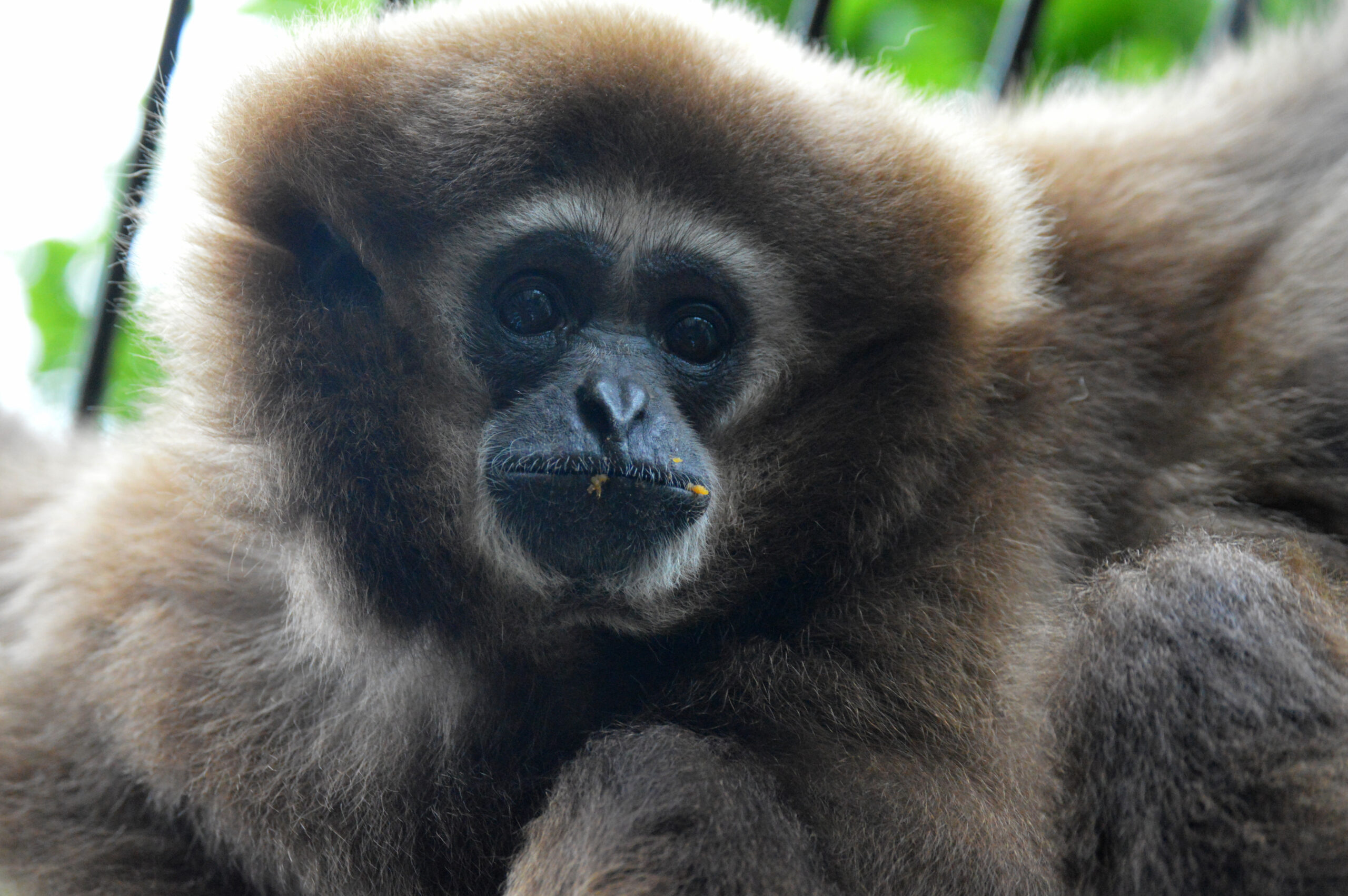White-Handed Gibbon

Basic Information:
Scientific Name: Hylobates lar
Habitat: White-handed Gibbons are found in dipterocarp forests of Indonesia, Laos, Malaysia, Myanmar, and Thailand.
Diet: White-handed gibbons eat fruit, leaves, insects, and flowers.
Size: 1.5 to 2 feet tall / 1.5 feet long
Weight: 10 to 13 pounds
Lifespan: 16.4 years according to AZA Species Survival Statistics
Distribution Map:
I.U.C.N. Conservation Status:

What does this mean?
Endangered – a species determined by the International Union for Conservation of Nature (I.U.C.N.) to possess a very high risk of extinction as a result of rapid population declines of 50 to more than 70 percent over the previous 10 years (or three generations), a current population size of fewer than 250 individuals, or other factors.
Our White-Handed Gibbons:
Yoda (Male) – Born June 14, 1984
Snowflake (Female) – Born January 22, 1988
Dooku (Male) – Born January 30, 2023
About White-Handed Gibbons:
White-handed gibbons, or Lar gibbons, are an arboreal primate species found across various countries in Southeastern Asia. They are most notable for their distinctive whooping call that they do in order to communicate and bond with other gibbons. Gibbon groups usually consist of 2 mated adults and up to 4 offspring and cover upwards of 100 miles of territory. You can usually spot them swinging among the treetops of their forests using their long arms with a method called brachiation. This unique motion involves the gibbon swinging their entire body like a pendulum to maintain momentum, save energy, and launch themselves up to 30 feet forward! Unfortunately, their populations have been declining in recent years. This is due, in part, to the flourishing illegal pet trade in Thailand in which they are hunted, captured, traded, and exploited. The deforestation of their forest habitat is also a threat and is becoming more of a problem. Protected conservation areas provide the greatest survival rates for populations of this species, although the ongoing agricultural development through these areas increases both fragmentation and access for hunters.
Did You Know?!
- A gibbon’s hands has short, opposable thumbs and long, curved fingers that are held together to form hooks as they swing through the canopy. The large toe on their feet is also opposable. While on the ground, however, a gibbon will hold their arms up at an angle in order to keep balance and prevent them from dragging on the ground.
- On average gibbons spend ten hours a day grooming each other (social or allo-grooming). Allo-grooming probably serves more as a hygienic activity than a social function for this species.
- At night, white-handed gibbons sleep sitting up in groups in “sleeping” trees.
- Gibbon pairs mate for life. These pairs usually birth 1 infant gibbon every 2 to 2.5 years. Typically, the baby gibbon clings to its mother’s belly for most of its first year. However, since the father stays around as part of the family unit, the dad may carry the gibbon as the baby gets older. The babies will then start to spend time away from their family unit when they turn about 6. They will reach maturity between 6 and 10 years old. During this time, younger siblings may be born. At any one time, as many as 4 offspring may live within a gibbon’s family unit.
- Each gibbon family unit lives in its own territory that can range up to one hundred acres in size. Gibbons can be very territorial and will defend their territory against all other gibbons. Intruders are warned of the resident group’s presence from the loud calls that the gibbons make. These calls can carry extremely long distances.
- Gibbons are very vocal, especially in the morning when the female begins to emit penetrating hooting calls to remind other families in the area of the borders of the territories. The male also takes over in repeating these calls. In addition, at the height of a calling cycle, adult females utter a distinctive prolonged wail which rises by irregular swoops through about two octaves. A variety of squeaks can also be uttered, especially by juveniles. During meal time gibbons will also give off a gentle sounding soft hoot while waiting for their food.
